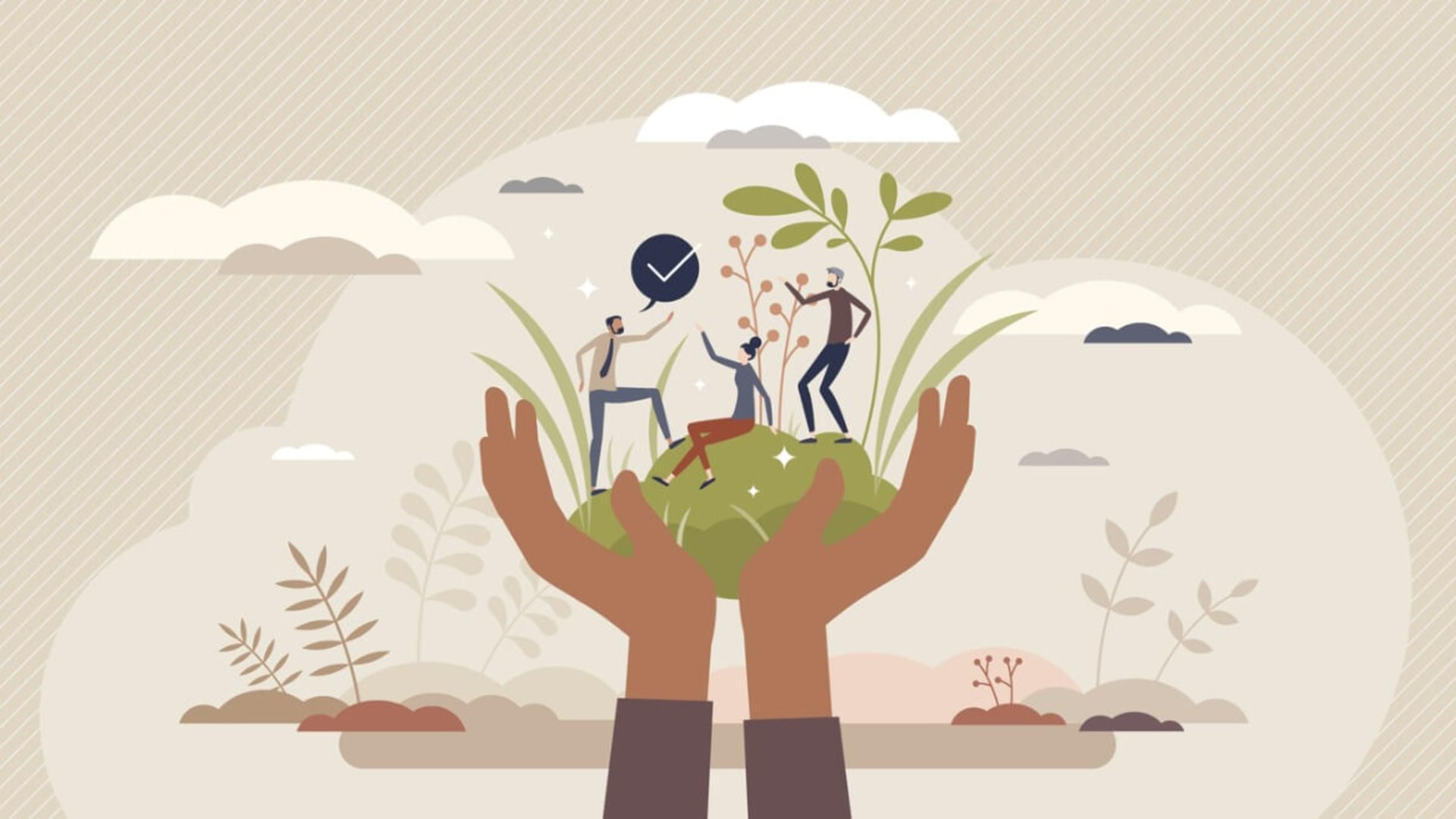Increased access to high-speed internet reduced deaths related to COVID-19 in the U.S., new research shows. Just a 1% increase in broadband access across the country was responsible for lowering mortality caused by the coronavirus by roughly 19 deaths per every 100,000 overall and reduced COVID deaths by as much as 36 for every 100,000 in urban counties, the study finds.
This is only one example of how technology can contribute to the social good — fostering a better present and future for our world’s occupants. We know technology is about innovation, creativity, and transformation. It has been harnessed in myriad ways to solve many problems, and many of the issues it can help address are the world’s greatest challenges. Could technology be the answer to so many of our collective obstacles as a global community?
We can serve marginalized communities — those who desperately need these contributions to improve health conditions, promote economic opportunities, and otherwise transform the world. We can change people’s lives and humanity as a whole for the better.
As we all know, technologies of all shapes and sizes have become an integral part of our daily lives. We depend on these tools to conduct our day-to-day activities and fulfill our most basic needs. From doing our jobs to connecting with our friends and families, technology is responsible for a large part of what we do. At least, that is true for so many of us. Unfortunately, many members of society don’t have the same opportunities and access as the rest.
This is why we need to do better. We need to boost communities and individuals who are at a grave disadvantage. And we can, thanks to the help of technology.
We are responsible for uplifting people around the world who are disadvantaged and don’t have access to the tools and resources they need. And we have tremendous resources at our disposal, so we will need to use them for the social good — to change the world. Initiatives shown on the BairesDev CSR page are a testament to how organizations can strategically apply technological expertise and resources to improve communities globally.
Technological Initiatives for the Social Good
Across industries around the world, corporations, small and medium enterprises, nonprofit organizations, educational institutions, and other organizations have long realized the power of technology and innovation. And many are not content harnessing technology for their own purposes and missions alone. They want to take part in sharing the wealth — both literally and metaphorically — by contributing to the social good through technology and technological innovation.
For example, companies like GitHub and JPMorgan Chase & Co. have initiatives and programs promoting tech for the social good. DePaul University, meanwhile, has a dedicated Technology for Social Good Research and Design Lab, which “brings together faculty, students, and other collaborators to design, build, and study tools with the goal of fostering equitable education and empowerment in urban communities.”
Similarly, Tech for Social Good at the University of Michigan, founded in 2020, “creates cross-campus dialogues to explore the social/cultural/political dimensions of digital technologies and the culture of contemporary technological institutions.”
These are just some of the many initiatives making strides toward improving the world and the lives of humans—all through technology.
Problems and Initiatives: Leveraging Technology for Societal Impact
The problems plaguing humankind are far-reaching, and it would be impossible to address them or even list them all here. Moreover, some extend beyond the capabilities of even the most powerful technologies, although in our industry, we are developing new innovations every day, and potential solutions to our most complex challenges could very well be on the horizon.
Still, it is important to remember that technology is not magic. The problems we have outlined and described below are by no means resolved. However, we do have some tools in place to help curb their impact and take strides toward addressing them — toward the ultimate goal of one day eliminating them altogether.
1. Access to Information
The internet was a staggering invention that changed the face of information dispersion and consumption. Today, so much information is readily available and accessible to all of us with just a click of a button. There’s such a wealth of information out there that we now need to be on guard about the spread of misinformation or false information. At least, that is true of users who have limitless internet access.
For many of us, that’s the case. It most likely is for anyone currently reading this article! But for some people, internet access is not a given. They may live in remote or underserved areas, for example. Or, they don’t have the devices necessary for using the internet. There are many reasons why some individuals are without equitable access to information — and it’s neither fair nor equitable.
But some initiatives are aimed at narrowing that information gap. For decades, for instance, public libraries across the United States have offered computers with internet access for public use — a natural fit since libraries act as information hubs and resources to serve all individuals.
There are other instances of initiatives that aim to assist people who have limited or no access to the internet. For example, in response to the impacts of COVID-19, the Washington State government established Drive-In WiFi Hotspots that provide free, temporary, emergency internet access for state residents without their own broadband service. All residents can take advantage of the service, whether for job searches, unemployment filing, or remote learning.
2. Education
There have been numerous efforts to improve the quality of and access to education at all levels, from pre-K to higher learning. It is clear that something needs to be done to ensure that all citizens are academically equipped and prepared for their future, where knowledge and skills, at least in a large part, dictate their paths. But education is far from equitable and inclusive.
Technology and education are a natural partnership. That’s why the field of education technology, called “edTech,” emerged, leveraging various technological tools, including hardware and software, to boost learning across levels. Today, many dedicated edTech companies exist to strengthen educational practices and learning.
There are many examples when considering bettering educational practice and access. We have described how many providers offered free Wi-Fi during the early pandemic. Others still specifically provided broadband access to households with students at the K-12 and college levels. It allowed them to keep up with their coursework, attend classes remotely, and complete their assignments.
The pandemic highlighted existing educational inequities while simultaneously presenting opportunities for technology to close certain access gaps. This is clearly an ongoing issue — one that demands constant attention and effort.
Another example of efforts toward improving educational access is Khan Academy. The organization is a nonprofit that aims to provide free education to anyone, regardless of location. The organization offers personalized learning plans, allowing students to practice material at their own pace and enabling them to gain knowledge and move forward. All materials are digital. This is one of several examples of similar initiatives.
3. Financial Inequity and Poverty
Financial inequities are at the root of many of the world’s problems, but there is no easy solution to narrow the divide.
Fintech, however, is making strides in the right direction. Describing a range of services at the intersection of finance and tech — practically any service or product that leverages digital tools within the finance and banking sector — this field has long made banking and other financial services more efficient and easier to access. And it can make a positive social impact by helping improve financial literacy and creating more accessible solutions for everyone.
Consider Upsolve. The nonprofit offers a free app allowing low-income individuals in the U.S. to file for bankruptcy independently. The organization also provides resources, tools, and an online community to help families overcome debt and take the necessary steps to improve their financial situations.
Other fintech firms aim at arming individuals with the knowledge to help them monitor and improve their finances. Several free platforms that allow users to check and receive real-time updates on their credit scores have cropped up over the years. Credit Sesame is one of many examples of this type of service. Having greater personal financial awareness makes users less likely to incur debt.
Many additional initiatives support low-income individuals or those in financial distress. Some platforms evaluate lending worthiness based on factors outside of traditional measures, making the process more inclusive. Others are aimed at more accessible banking.
Called the “Bank for the Poor,” Grameen Bank of Bangladesh seeks to give everyone access to banking services, including savings accounts and microcredit loans for individuals who wouldn’t normally qualify.
Fintech offers so much potential for improving the lives of the less fortunate and underserved that there is even a global movement called Fintech for Good, focusing on “accountability, responsibility, and sustainability.” The organization is a worldwide community that shares knowledge and ideas to promote ethical finance.
4. Hunger
Food insecurity is one of the most pervasive worldwide issues. According to the World Health Organization (WHO), the number of people affected by hunger reached as high as 828 million in 2021, an increase of roughly 46 million from 2020.
It’s an alarming statistic, and that’s why innovators prioritize the global problem. ShareTheMeal, an initiative from the United Nations World Food Programme (WFP), is one idea to help address the issue. Touted as the world’s first app against global hunger, it enables people to “share” their meals with children coping with food insecurity. Donations through the app support a range of WFP ventures, such as providing food assistance in emergency situations.
Meanwhile, The Akshaya Patra Foundation provides midday meals to children across all of India’s 12 states. While not a tech organization, Akshaya Patra recognized that it could have an even greater impact by digitizing its facilities, which also enabled it to collect real-time data. As a result, the organization increased operational efficiency by 5% and lowered the cost per meal by 10 paise, thereby allowing it to reach even more children — tens of thousands of children to be more precise.
5. Transportation
Many of us take our cars for granted. Still, many individuals and full communities lack access to affordable, reliable transportation — critical for getting to work, school, grocery stores, and more. Moreover, many types of vehicles are doing irreparable damage to our planet, making the need for sustainable public transportation even more imperative.
WhereIsMyTransport is a technology company that aids urban mobility by providing public transport data, equipping millions of people living in developing countries worldwide with the information they need to access public transportation. The tool maps entire public transit networks, produces point-of-interest data from economic activity centers and generates real-time alerts from road and mobility networks. It also takes strides to keep this information timely and up-to-date.
Many municipalities are overhauling their transportation infrastructures, augmenting them with tools like digital monitoring, sensing devices, and IoT devices to provide useful data and make the systems more sustainable, reliable, and safe for passengers.
Meanwhile, as part of the GreenIoT project in Sweden, which uses the IoT to measure air pollution levels, a study of the usage of low-cost wireless sensors at the ground-level monitoring bus station in Uppala informed efforts to decrease air pollution and improve air quality. It’s a win-win for passenger and rider safety and the environment.
6. Clean Water
Too many people lack access to clean, quality water. When communities rely on low-quality water for drinking, bathing, and other purposes, the health implications can be dire. Individuals can be exposed to life-threatening diseases, such as cholera, typhoid, and dysentery. Thousands of people die every day from unclean water.
But technology can help address the problem and improve access to clean drinking water. One example of a tool aimed at creating more sanitary conditions is mWater. The software platform aids governments, service providers, and organizations around the world in boosting conditions.
Established in 2012, initially to improve water quality monitoring in Tanzania, mWater uses a data-driven management approach. The free, open-access platform democratizes data analytics to create a resource both institutions, and individual users can leverage to collect and evaluate data from surveys and other tools housed in the app to address global challenges, including improving access to safe water. Today, the platform is used in 184 countries.
“We believe that the first step to improving water and sanitation services and attracting more investment to the sector is to create reliable data systems,” the organization says. “Using reliable data to plan, execute, and evaluate results leads to positive cycles of increasing performance, public confidence, and financial investment. We help our partners and over 100,000 free users of our software platform to become data-driven, regardless of where they are located or their capacity level.”
Innovating for the Globe
Can technological innovations solve humanity’s most pressing challenges? Clearly, there is plenty of work to be done, and it would be overzealous to claim that technology is on its way to making the world a perfect place. Still, a large amount of evidence suggests that we are making strides in the right direction, thanks to innovation, strong partnerships, and people investing their resources in causes that matter.
Thanks to the many tools we now have at our disposal, and thanks to the individuals and organizations that make advancement all the more possible, we are better equipped to make progress and help our most vulnerable and underserved communities and populations. We are helping people accomplish their goals, gain skills, and access the resources they need.
What’s next in terms of technology for the social good? Technologists, and those looking to find solutions and drive change, will need to spearhead and engage in dialogues about the problems that exist and the possible solutions for addressing them.
Together, we will need to ensure that this is an ongoing dialogue and process — that we won’t put an end to our work toward innovating for the social good until we have fully solved the world’s greatest obstacles and addressed the needs of everyone, even if that takes centuries or longer.







